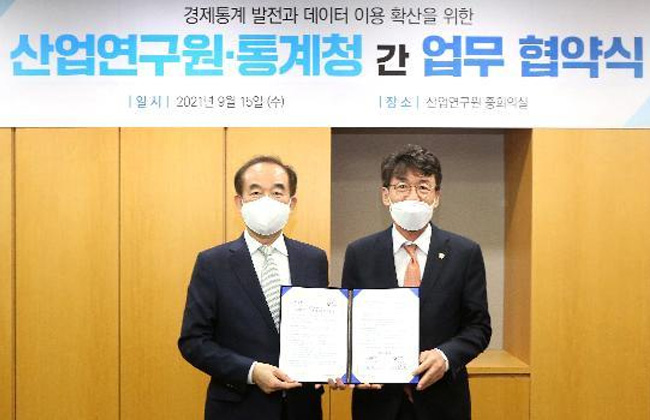Industry Trends
In September 2023, Korea's industrial activities increased in both production and expenditure, with all four major sectors of production growing for two straight months.
| Subject | All industries | Mining & manufacturing |
Service | Retail sales | Equipment investment |
Construction completed |
|---|---|---|---|---|---|---|
| Monthly Change (%) | ∆1.1 | ∆1.8 | ∆0.4 | ∆0.2 | ∆8.7 | ∆2.5 |
In September, production of mining and manufacturing industries rose by 1.8 percent, led by semiconductors (12.9 percent) and machinery (5.1 percent, including semiconductor equipment) as the semiconductor industry improved. Supported by increases in transportation (2.2 percent) and food and lodging (2.4 percent), service industry production grew by 0.4 percent despite the end of the holiday season diminishing the leisure and hospitality sector (△4.2 percent). Despite decreases in retail sales of durable goods (△2.3 percent) and semi-durable goods (△2.8 percent), the overall retail sales increased by 0.2 percent as the Chuseok holiday pushed up the sales of nondurable goods (2.3 percent). Capital investment jumped by 8.7 percent to grow rapidly for the second consecutive month, led by improvements in machinery [special industrial machinery] (7.3 percent) and transportation equipment [aircraft and others] (12.6 percent). Construction of residential buildings fell (△2.7 percent), but construction investment increased for the third consecutive month, driven by significant growth in civil engineering projects (20.0 percent). The cyclical change in the coincident index decreased for four straight months (2.5 percent) due to shrinking retail sales and imports, but the decline was 0.1 percent narrower than the previous month. Signs of an economic rebound have gradually grown, but uncertainties remain. On the production side, positive signs include the recent improvement in exports, the solid recovery of the US economy, and the growing number of foreign tourist arrivals, but the escalating tensions in the Middle East, volatility in international oil prices, and the possibility of prolonged high interest rates in major economies are weighing on the economy. Consumption and investment are supported by the favorable employment situation, accumulated household savings, and investment cooperation with major countries resulting from active summit diplomacy, but also burdened by sluggish construction orders and household debt burdens, as well as growing uncertainties in prices at home and abroad.
※ Source: Ministry of Economy and Finance(moef.go.kr)
Trends by Industry
- Automotive
-
‘Exports Continued Growing, But at a Slower Pace’

→ In September, domestic consumption decreased by 6.3 percent year-on-year due to the Chuseok holiday reducing business days and weaker consumer sentiment. Exports increased by 5.6 percent from a year ago in September as the country exported more eco-friendly cars. Imports in August decreased by 26.1 percent year-on-year to decline for the second consecutive month, as fewer finished vehicles were imported. Production in August continued to increase, led by increases in the production of high value-added vehicles such as eco-friendly cars and SUVs.
- Shipbuilding
-
‘All Major Indicators Improved with Brisk Production Activities’

→ In August 2023, the production index rose by 12.4 percent year-on-year, and the production indicator improved as shipments and capacity utilization rate rebounded from stagnation, with shipments and capacity utilization rate growing by 4.6 percent and 3.0 percent, respectively. Exports rose by 15.4 percent in September, driven by increased deliveries of high-value vessels such as large container ships and gas carriers. Imports rose by 45.3 percent year-on-year in August as the country imported tankers from the Middle East.
- General machinery
-
‘Domestic Consumption Slump Worsened, and Exports Grew for Six Straight Months’

→In August, production fell by 12.7 percent year-on-year as domestic consumption shrank further despite an increase in exports. In September, exports increased by 9.8 percent from a year ago on the back of rising demand for machinery investment and an increase in the number of working days (+2.5 days). Imports in August decreased by 10.3 percent year-on-year, weighed down by further weakening of domestic consumption.
- Steel
-
‘Base Effect Eased Production Decline, and Exports Rebounded’

→ In August, steel production fell by 0.8 percent year-on-year as the sluggish domestic construction economy diminished demands for bar steel and exports to major countries declined. In September, exports saw a year-on-year increase of 6.9 percent as the US, EU and others made further infrastructure investments and purchased more steel and some Chinese manufacturers cut production. August imports decreased by 4.1 percent year-on-year as unit prices continued falling despite growing imports from China, India, and Vietnam.
- Oil refining
-
‘Year-on-Year Decline in Exports Reduced to Single Digits on Higher Oil Prices’

→August production fell by 14.5 percent due to the routine maintenance of domestic players, while inventories rose by 1.6 percent. In September, higher oil prices helped reduce the year-on-year decline in exports to single digits, but exports still fell by 6.8 percent due to lower refining margins and reduced export volumes.
- Wireless communication devices
-
‘Decline in Exports Narrowed Significantly YoY in September to -3.1 percent, Raising Expectations of a Rebound in Q4’

→After the non-face-to-face trend triggered the rapid growth of ICT product sales, the global smartphone market has been experiencing a decline in demand for the past two years, affected by global supply chain disruptions, high inflation and high interest rates. With the arrival of the seasonal peak in the second half of the year, smartphone shipments are expected to recover in Q4, supported by inventory depletion of major smartphone makers and base effects. After posting a 12.6 percent year-on-year decline in Q2, production turned up by 1.0 percent in August, and shipments increased by 6.8 percent as exports improved. In August, the number of Korea’s mobile communication subscription lines grew by 3.4 percent year-on-year and by 0.2 percent month-on-month, while the number of subscriber-based terminals (tablets, wearable devices, etc.) increased by 11.4 percent and the number of communication lines for IoT devices grew by 2.4 percent year-on-year. August imports fell by 34.3 percent from a year ago, due to diminished imports of smartphones and parts.
- Semiconductor
-
‘Semiconductor Industry Passing the Trough’

→ In August, semiconductor production rebounded to an 8.3 percent year-on-year increase, and also grew significantly from the previous month (by 13.4 percent). September exports reached USD 9.9 billion, the highest record in 2023, and the year-on-year decline also slowed significantly to 13.5 percent. Korea’s semiconductor exports are improving, but the prospect of the industry’s dramatic rebound remains unclear.
- Display
-
‘Exports Rebounded on New Smartphone Launches’

→Production continues to decline in August as the economic slowdown weakened demands. In September, panel exports increased by 4.2 percent backed by the end of the price fall, and exports continued to grow. Demands continued to decline due to the ongoing economic slowdown, but the release of new products by major makers is expected to boost exports.
* Please note that the latest data available in Statistics Korea are for the previous month in the case of exports and the month prior to the previous one for production.
Please enter the security text below
to prevent email collection
Please check the information of the person in charge.
연구과제 제안이 접수되었습니다.
신청이 접수되었습니다.


View Summary
코로나19 발생 이후 대부분의 고용 관심사가 항공 및 여행서비스, 음식·숙박 서비스 등 주로 서비스 업종에 집중된 상황에서 본 연구는 최근 그 중요성이 강조되고 있는 제조업의 고용변화를 살펴보았다. 분석에 따르면, 코로나19 이후 제조업 고용은 비교적 큰 충격 없이 빠르게 회복하는 모습을 보이고 있다. 제조업 고용은 서비스업에 비해 큰 충격 없이 유지되고 있고, 코로나19 직후 2020년 상반기에 약간 하락하였지만 하반기부터 회복 추세를 보이고 있으며, OECD 주요국의 제조업과 비교하여도 일본과 함께 고용 충격이 비교적 작게 나타나고 있다. 그러나 전반적으로 양호한 고용 성적에도 불구하고 제조업 내 특성 별로는 차이가 나타나는 것으로 보인다. 종사상 지위 별로 보면, 임시·일용직, 고용원이 있는 자영업자에서 고용 충격이 상대적으로 크게 나타났고, 상용직과 고용원이 없는 자영업자는 큰 충격이 없는 것으로 나타났다. 제조업 규모별로는 300인 이상의 경우 코로나 발생 초기 약간의 충격 이후 고용이 빠르게 반등하면서 코로나 이전보다 고용이 더 증가한 반면, 이보다 작은 규모의 제조업체들의 경우 고용 회복이 더디게 나타나고 있다. 고용의 중장기, 단기 추세선을 비교한 결과 제조업 업종에 따른 차이를 보였다. 코로나 발생 이전 3년간의 추세선을 2020년 1월부터 연장한 선과, 2020년 1월부터의 실제 자료를 이용한 단기 추세선을 비교한 결과, 의약품은 코로나19 발생 이전부터 시작하여 코로나19 발생 이후에도 견조한 증가세를 유지하고 있으며, 전자부품·컴퓨터, 기타운송장비, 가구는 코로나19 이후 오히려 고용 추세가 개선되었다. 그러나 다수 업종은 코로나 발생 이후 고용이 하락하였는데, 특히, 비금속광물, 1차금속, 금속가공 분야나 인쇄·기록매체 업종에서 하락이 상대적으로 크게 나타났다.
The following information is provided.
inform@kiet.re.krPlease complete the CAPTCHA below.
[전지적키에트시점] (Eng sub)심상치 않은
국내 대기업 움직임??
KIET 시점에서 보는 미래 로봇 산업 전망은
어떨까요?
경제전문가가 알려드립니다!
(산업연구원 박상수 실장)


